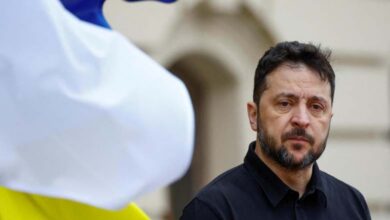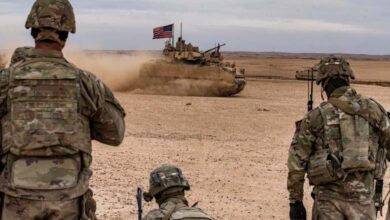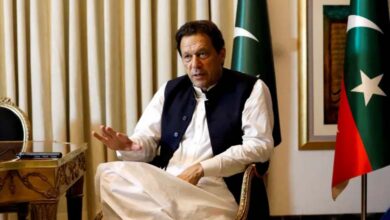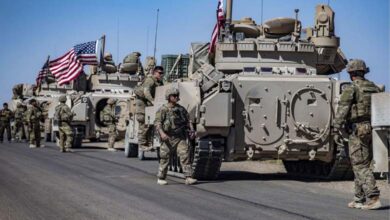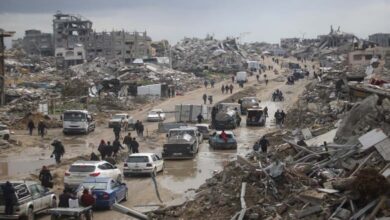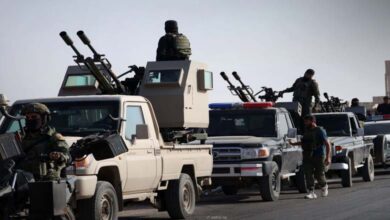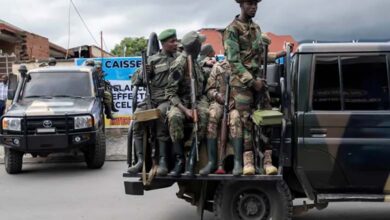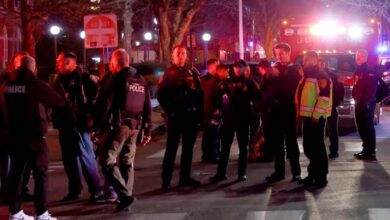Hassan Nasrallah: 18 Years of Disappearance and Killed by Israel – Who Is He?
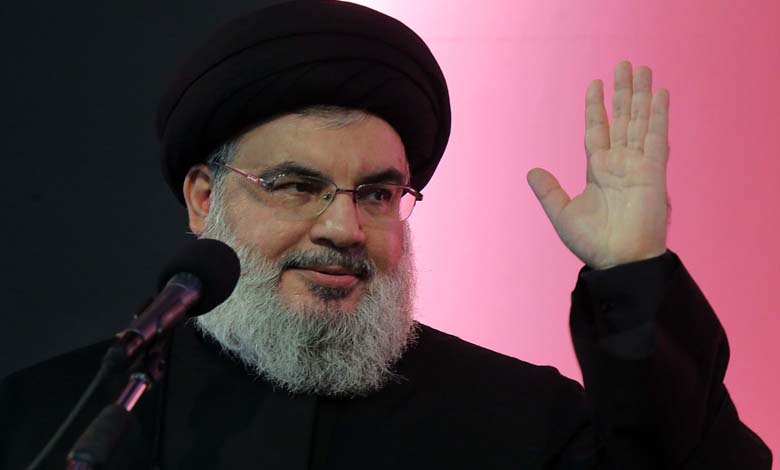
After 18 years of absence, Israel announces his death in an airstrike on the southern suburb of Beirut, thus ending decades of pursuit for the man most wanted by Tel Aviv.
-
Was Nasrallah Injured in the Phone Explosions in Lebanon?
-
Sinwar flirts with Nasrallah with a ‘rare’ message: Objectives and timing mystery
On Saturday, the Israeli army announced it had “eliminated” the Secretary General of Hezbollah following an airstrike on the southern suburb of Beirut, while a source close to the party stated that contact had been lost with Nasrallah since Friday evening.
Who is Hassan Nasrallah, the leader of Hezbollah?
Origins:
He is the ninth child of Abdel Karim, the father of three sons and five daughters, and is nicknamed “Sayyed” and “Abou Hadi.”
-
Nasrallah Awaits the Right Moment to Respond to Israel
-
Targeting a New Israeli Settlement… Nasrallah’s Escalating Threats
Born on August 31, 1960, into a Shiite family in Bourj Hammoud, in the northern suburb of Beirut.
Education:
From a young age, he was interested in studying the fundamentals of religion and continued his education at the public school in Sour, where he joined the Amal Movement.
In Sour, he met the imam of the Imam Jaafar al-Sadiq mosque, Sayyed Mohammad al-Gharawi, who led him to Najaf, Iran, to study theology at the hawza.
-
Nasrallah Ridicules Israel’s Capability to Wage Wide War in Lebanon
-
Did Nasrallah’s meeting with leaders of Hamas and Islamic Jihad yield anything?
During his studies, he met Abbas al-Mousawi, the founder of Hezbollah.
Details of Hassan Nasrallah‘s Death: How Was It Planned and Executed?
Return to Lebanon:
Nasrallah returned to Lebanon in 1979 after completing the first stage of his studies and continued his religious studies at the Baalbek hawza, which followed the teachings of Ayatollah Mohammed Baqir al-Sadr, the founder of the al-Da’wah movement in Najaf during the 1960s.
Family:
He is married to Fatima Yassine, who hails from the village of Al-Abbassiya, and has five children: Mohammad Jawad, Zainab, Mohammad Ali, and Mohammad Mahdi.
-
Haniyeh calls on Mikati, Berri, and Nasrallah to intervene and stop the clashes in Ain al-Hilweh
-
Haniyeh calls on Mikati, Berri, and Nasrallah to intervene and stop the clashes in Ain al-Hilweh
His eldest son, Mohammad Hadi, was killed in a battle against Israeli soldiers in September 1997 in the Rafai Mountains.
The Path to Hezbollah:
Nasrallah later became the representative of the Amal Movement in the Bekaa and a member of its central political bureau.
However, following the Israeli invasion of Lebanon in 1982, a schism occurred within the Amal Movement, leading to the emergence of two factions: one led by Nabih Berri and the other opposing faction led by Abbas al-Mousawi.
-
Hassan Nasrallah’s disease: Between reality and rumors… Hezbollah faces its worst era
-
Iran doctors treat Nasrallah amid reports of stroke
Following this split, Hezbollah emerged, which Nasrallah participated in founding at the age of 22, taking care of organization and the establishment of military cells.
He was later appointed deputy responsible for the Beirut region and then became its head.
He subsequently became the general executive responsible and a member of the Shura Council, the highest governing body within Hezbollah.
In 1989, he left Beirut for Qom, Iran, where he continued his religious studies.
He returned in 1991 after the armed conflicts between Hezbollah and the Amal Movement.
-
Nasrallah, attacks the Gulf and does not oppose dialog with it
-
Nasrallah: If the blast of Beirut appears as an act of destruction by Israel, it would pay an equal price
Abbas al-Mousawi was elected Secretary General of the party, with Naïm Qassem as deputy, while Nasrallah resumed his previous position.
On February 16, 1992, Nasrallah was elected Secretary General of Hezbollah to replace Abbas Mousawi, who was assassinated by Israel.
War with Israel:
Since 1993, Israel has entered into conflict with Hezbollah, which bombarded northern Israel with rockets before leading to a ceasefire agreement.
-
The “gouged eyes” could have been avoided… Here’s what Hezbollah overlooked
-
Did Mossad Rig Hezbollah’s Communication Devices in Taiwan?
In April 1996, Israel launched “Operation Grapes of Wrath,” which lasted 16 days and ended in a ceasefire.
In 2000, then-Prime Minister Ehud Barak withdrew all Israeli troops from Lebanon, which increased Nasrallah‘s popularity.
In 2004, Nasrallah played a key role in prisoner exchanges between Hezbollah and Israel, allowing the release of hundreds of Palestinian and Lebanese prisoners, as well as the return of many corpses, including that of his son Hadi, lost in 1997.
-
Washington Post reveals how Lebanese pay the price for Iranian threats and ongoing Hezbollah-Israel clashes
-
Iran Planned to Trap Spies by Creating Fake Companies
The July 2006 war began after Hezbollah conducted a military operation it named “The True Commitment,” during which three Israeli soldiers were killed and two captured.
Israel responded with intensive bombardments on numerous areas of the capital Beirut, especially the southern suburb, considered Hezbollah‘s stronghold.
On August 3, 2006, Nasrallah promised to bombard Tel Aviv in response to the Israeli strikes on Beirut.
Will Nasrallah‘s Death Accelerate the End of Hezbollah?
On Israel’s Radar:
Israel has never hidden that Nasrallah was an assassination target, which led him to disappear from the radars since 2006, appearing only in pre-recorded videos.
-
Can Israel Deter Hezbollah? Dark Scenarios for a Potential Confrontation
-
How Did Hamas Leader Fall into the Beggar and Vendor’s Trap? Details of the “Ghost” of Hamas Assassination
Nasrallah lost popularity in the Arab world after announcing on May 25, 2013, that Hezbollah was participating in the events in Syria.
He attempted to regain his popularity by announcing his participation in the current war by bombarding northern Israel since October 8.
Relations with Iran:
A talented speaker, he has managed to maintain the leadership of Hezbollah since 1992, drawing his strength from his absolute loyalty to Iran, which has provided him with unlimited political, financial, and military support.
-
Will Iran Abandon Its Revenge Against Israel in Exchange for a Gaza Ceasefire?
-
New Details on Haniyeh’s Assassination: What is the Involvement of Mossad and Iran’s Revolutionary Guard?
The number of Hezbollah soldiers is estimated to be around 100,000, equipped with an arsenal of weapons including rockets, drones, and various types of arms, transforming Hezbollah into a state within a state.
When the civil war broke out in Lebanon in 1975, his family was forced to return to Bazouriye, the hometown of his father.



